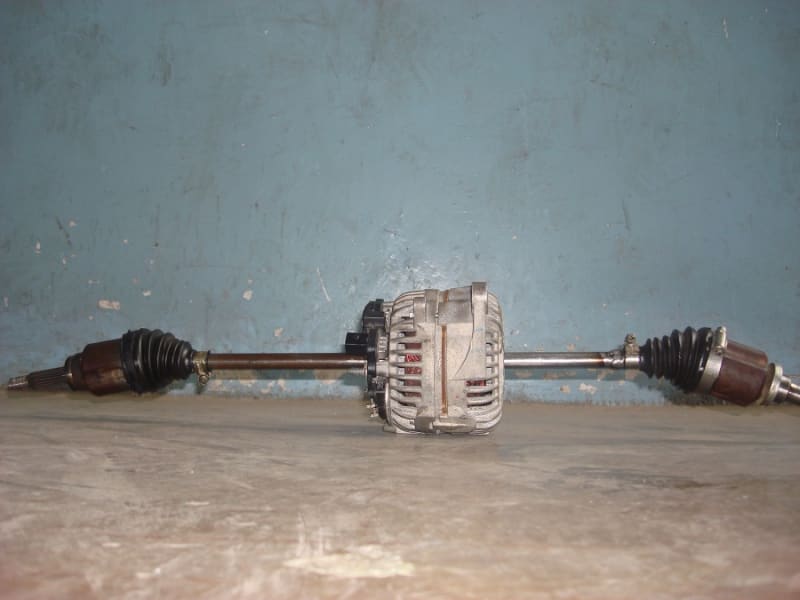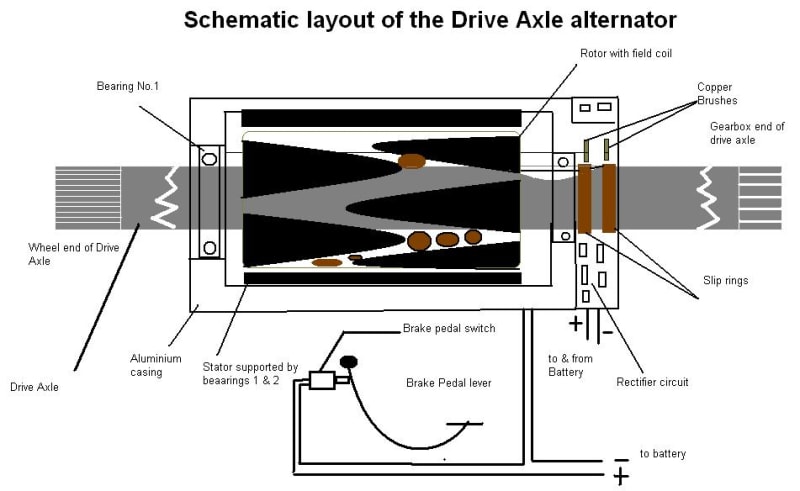This invention is applicable to automotive vehicles & railway wagons & bogies. The invention was initiated with the intention to substantiate the braking efficiency of an automotive vehicle or a railway wagon/bogie.
The basic action comprises of activation of the alternator during the brake application duration by means of 12V EMF field excitation current. This current can be provided to the stator of the drive axle alternator through a circuit comprising of brake pedal switch which is thrown ON whenever the brake pedal is operated & is kept ON until the time the Brake Pedal is kept pressed down. During this period the alternator generates AC current which is fed to the car battery after rectification to 12V DC by the rectifier fitter at the end of the alternator & while generating the current the alternator puts braking load on the wheel & thereby impeding the speed of the wheel & hence the vehicle is slowed down.
On releasing the Brake Pedal the switch is turned OFF & the 12V excitation current is also turned OFF, so the alternator shaft ( in this case the drive axle) rotates freely as it is being driven by the vehicle gearbox system.
Figures 1 & figures 2 show the picture of a actual functional drive axle alternator & the schematic drawing of the basic circuit.
In case of railroad wagons & bogies, the LH & RH wheels are linked by means of an axle( figure 3),an alternator can be constructed on the axle, similar to as described in the case for automotive vehicles. The activation current & the output current can be designed to meet the voltage requirements. This system can also be used in railroad applications.
The system results:
1) continual charging of battery
2)15% improved stopping distance while braking. Prevents skidding, a kind of cheap ABS system.
3) Improves the life of brake pads & disk
4) betters Fuel economy by about 12%
Like this entry?
-
About the Entrant
- Name:Suryanarayan Patnaik
- Type of entry:individual
- Patent status:pending





